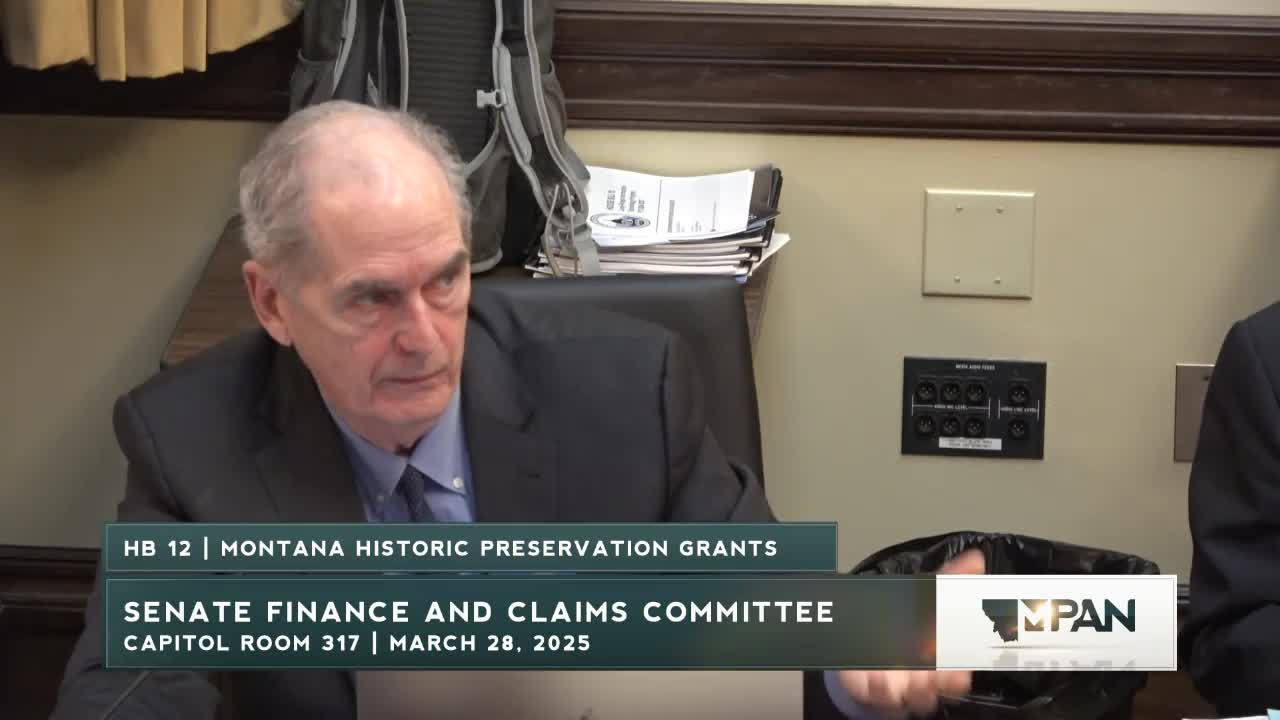Committee hears funding struggles for Missoula County preservation projects
March 28, 2025 | 2025 Legislature MT, Montana
This article was created by AI summarizing key points discussed. AI makes mistakes, so for full details and context, please refer to the video of the full meeting. Please report any errors so we can fix them. Report an error »

Montana's Senate Finance and Claims Committee faced significant challenges during its recent meeting, as members discussed the allocation of funds for various community projects. A key point of contention arose regarding the requirement for applicants to provide a 20% match for funding, which has hindered several initiatives, particularly in Missoula County.
During the meeting, it was highlighted that many applicants, who had initially submitted their proposals without the expectation of a financial match, found themselves unable to proceed due to this sudden requirement. This change has left some projects stalled, as volunteer-run organizations struggle to raise the necessary funds. The committee acknowledged that this requirement may have contributed to the rejection of certain applications, leading to disappointment among community stakeholders.
Representative Fitzpatrick, who closed the discussion, emphasized the complexity of the funding process, noting that the committee received nearly $23 million in requests while only having $6 million available to allocate. He pointed out that the committee had to establish strict criteria to prioritize projects, which has drawn criticism from various groups advocating for broader eligibility.
Among the organizations that testified in support of funding were the Anaconda Elks Club, Lavina Schools, and the Yellowstone Art Museum, all of which are vying for support to enhance their community services. However, some projects were deemed ineligible, such as those focused on housing or non-historic preservation efforts, which the committee argued do not align with the intended public benefit.
As the committee navigates these funding challenges, the implications for community development and historical preservation in Montana remain significant. The discussions underscore the need for a balanced approach that considers both the financial realities faced by applicants and the overarching goals of public benefit and preservation. Moving forward, stakeholders will be watching closely to see how the committee addresses these concerns and whether adjustments to funding criteria will be made to better support community initiatives.
During the meeting, it was highlighted that many applicants, who had initially submitted their proposals without the expectation of a financial match, found themselves unable to proceed due to this sudden requirement. This change has left some projects stalled, as volunteer-run organizations struggle to raise the necessary funds. The committee acknowledged that this requirement may have contributed to the rejection of certain applications, leading to disappointment among community stakeholders.
Representative Fitzpatrick, who closed the discussion, emphasized the complexity of the funding process, noting that the committee received nearly $23 million in requests while only having $6 million available to allocate. He pointed out that the committee had to establish strict criteria to prioritize projects, which has drawn criticism from various groups advocating for broader eligibility.
Among the organizations that testified in support of funding were the Anaconda Elks Club, Lavina Schools, and the Yellowstone Art Museum, all of which are vying for support to enhance their community services. However, some projects were deemed ineligible, such as those focused on housing or non-historic preservation efforts, which the committee argued do not align with the intended public benefit.
As the committee navigates these funding challenges, the implications for community development and historical preservation in Montana remain significant. The discussions underscore the need for a balanced approach that considers both the financial realities faced by applicants and the overarching goals of public benefit and preservation. Moving forward, stakeholders will be watching closely to see how the committee addresses these concerns and whether adjustments to funding criteria will be made to better support community initiatives.
View full meeting
This article is based on a recent meeting—watch the full video and explore the complete transcript for deeper insights into the discussion.
View full meeting
